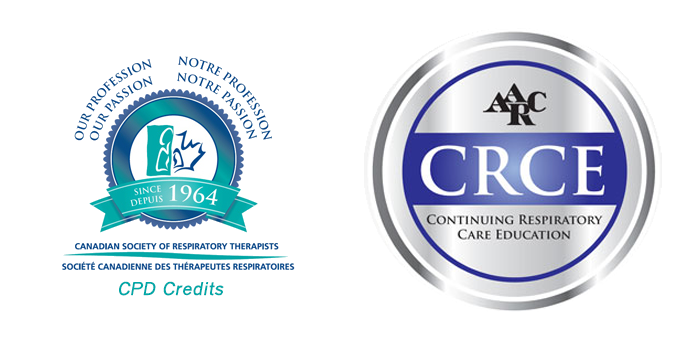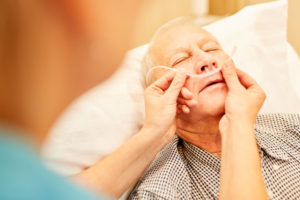Glycopyrrolate inhalation powder (a long-acting muscarinic antagonist) is administered at 15.6 µg twice daily for the long-term maintenance treatment of airflow obstruction in patients with COPD. Studies indicate that inhalation of the powder may improve lung function significantly in patients with moderate to severe chronic obstructive pulmonary disease (COPD) regardless of baseline smoking status.[i]
 COPD develops in approximately 50% of smokers with approximately 40% of those patients continuing to smoke after the COPD diagnosis.
COPD develops in approximately 50% of smokers with approximately 40% of those patients continuing to smoke after the COPD diagnosis.
Researchers conducted a post-hoc analysis of pooled data from two 12-week studies in 867 patients (57% current smokers; 43% former smokers) to determine the effect of smoking status on the efficacy and safety of glycopyrrolate inhalation powder compared with placebo in patients with moderate to severe COPD.[ii] They found that glycopyrrolate inhalation powder significantly improved all lung function measures. Additionally, they found that the incidence of adverse events and serious adverse events was insignificant, regardless of smoking status. Lastly, it was determined that current smokers receiving background inhaled corticosteroid therapy in addition to glycopyrrolate inhalation powder had nonsignificant improvements in FEV1 compared with a placebo.
Treatment with glycopyrrolate inhalation powder resulted in clinically important improvements in COPD assessment test scores, transition dyspnea index focal scores, and daily symptom scores in both current and former smokers, with significant improvements vs placebo only in current smokers.
[i] Tashkin DP, Goodin T, Bowling A, et al. Effect of smoking status on lung function, patient-reported outcomes, and safety among COPD patients treated with glycopyrrolate inhalation powder: pooled analysis of GEM1 and GEM2 studies. Respir Res. 2019;20(1):135.
[ii] ibid
COPD Online Courses at RespiratoryEdu.org
 RespiratoryEdu.org is dedicated to meeting the educational needs for professionals in the sleep medicine and respiratory therapists in the sleep industry. Our efforts are managed by Sleep Education Partners with expertise in sleep medicine, respiratory medicine, critical care medicine, leadership & management, accreditation, IT and marketing and sales. RespiratoryEdu.org online courses are approved for continuing education for Sleep Technologists and Respiratory Therapists.
RespiratoryEdu.org is dedicated to meeting the educational needs for professionals in the sleep medicine and respiratory therapists in the sleep industry. Our efforts are managed by Sleep Education Partners with expertise in sleep medicine, respiratory medicine, critical care medicine, leadership & management, accreditation, IT and marketing and sales. RespiratoryEdu.org online courses are approved for continuing education for Sleep Technologists and Respiratory Therapists.
Overlap Syndrome (Chronic Obstructive Pulmonary Disease & Obstructive Sleep Apnea) Course Description:
This course provides an overview of the relationship between COPD and OSA when the conditions overlap, as well as the incremental problems that result from the overlap.
AARC – Overlap Syndrome (Chronic Obstructive Pulmonary Disease & Obstructive Sleep Apnea) – AARC CREDIT 1.0 CRCE
AAST – Overlap Syndrome (Chronic Obstructive Pulmonary Disease & Obstructive Sleep Apnea) – AAST CREDIT 1.0 CEC
BRPT – Overlap Syndrome (Chronic Obstructive Pulmonary Disease & Obstructive Sleep Apnea) – 1.0 Course Hour CSTE
CSRT – Overlap Syndrome (Chronic Obstructive Pulmonary Disease & Obstructive Sleep Apnea) – CSRT CREDIT 1.0 PD/CE



 [1] Tashkin DP, Goodin T, Bowling A, et al. Effect of smoking status on lung function, patient-reported outcomes, and safety among COPD patients treated with glycopyrrolate inhalation powder: pooled analysis of GEM1 and GEM2 studies. Respir Res. 2019;20(1):135.
[1] Tashkin DP, Goodin T, Bowling A, et al. Effect of smoking status on lung function, patient-reported outcomes, and safety among COPD patients treated with glycopyrrolate inhalation powder: pooled analysis of GEM1 and GEM2 studies. Respir Res. 2019;20(1):135.




